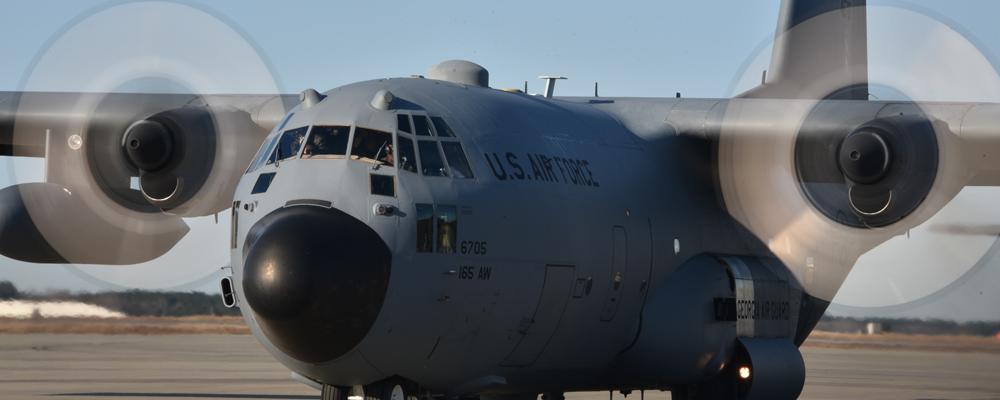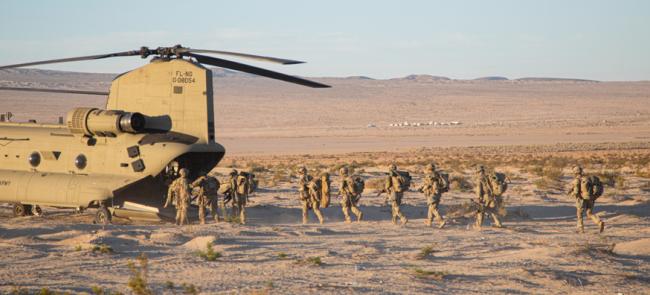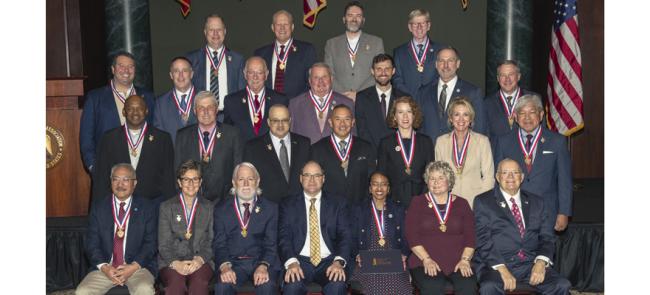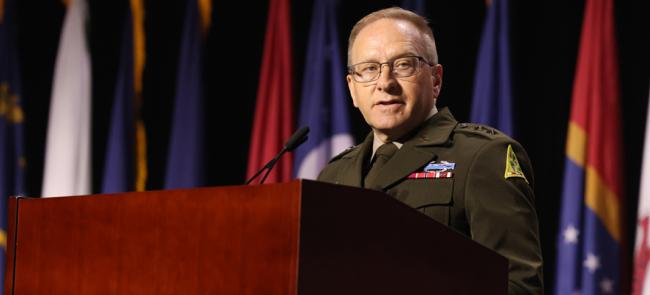
Mixed Emotions
SAVANNAH AIR NATIONAL GUARD BASE, GEORGIA — It's a quiet morning in Savannah, where members of the 165th Airlift Wing are performing routine checks on several of their workhorse C-130H Hercules cargo planes.
Over the past year, the Georgia National Guard wing has supported COVID-19 relief efforts and flown troops on short notice to provide security at the U.S. Capitol, all on top of its normal training missions and domestic and overseas operations.
The year has been far from routine. But as temperatures on the flight line rise and amid the distant drone of an idling engine, there’s another buzz around the base.
The wing was one of a few identified by the Air Force late last year as a future home of the C-130J, the newest model of the C-130 planes the Guard has relied on for decades.
That decision means some airmen will need to retrain; others may need to find new jobs. But more importantly, the promise of new planes brings a sense of security to the unit.
“With anything, change is a little different, but the state and wing leaders have done a great job of explaining the strategic plan,” says Col. Christopher Dunlap, the wing commander. “We are energized, we’re ready, we’re anxious.”
While Dunlap and his airmen may be relieved. Many other Guard C-130 units are nervously eyeing Air Force plans for the aging aircraft.
Active-component wings have long since abandoned the C-130H for the newer J’s. And now, the Air Force wants to whittle down its C-130 fleet, from more than 300 planes to 255, over the next five years. Of the remaining fleet, 163 would be J-models. Only 92 C-130Hs would remain, all in either the Air Guard or Air Force Reserve. The planes would receive needed modifications to keep them viable into the future, officials say.
The math reveals that some wings in the coming years are likely to lose their aircraft if Congress allows the Air Force to move forward with its plans. Those at most risk are units flying the oldest C-130Hs.
As of May, the Air Guard’s 17 C-130 wings account for 149, or just under half, of the Air Force’s fleet of 309 C-130s. The active component flies 108 J models. While the Air Guard has 16 J’s and 133 H’s. And the Air Force Reserve has 10 J’s and 42 H’s.
Of the 17 Guard C-130 wings, two — in California and Rhode Island — have already received Js. Three others, in Kentucky, Texas and West Virginia, are in the process of converting, a three-year process that involves transitioning from an analog aircraft to one that is fully digital.
Meanwhile, the Air Force has announced plans to send J’s to a Guard C-130 training unit in Arkansas and the aforementioned Georgia wing. Right now, however, there are no new aircraft for the 165th. Its conversion is on hold until lawmakers add more J’s to future defense appropriations. Air Force officials have made it clear that they are not putting any more in their budget requests.
That leaves 10 Guard wings flying the older H model planes well into the future. With eight planes per wing, the 80 C-130Hs required would account for the vast majority of the Air Force’s proposed future H fleet.
We are energized, we're ready, we're anxious.
—Col. Christopher Dunlap, the wing commander of the Georgia Air National Guard's 165th Airlift Wing
CONGRESSIONAL DELEGATIONS, Air Guard leaders and state leaders have sounded the alarm over the potential cuts.
Governors of 12 of the 17 states with C-130 wings recently signed onto a letter imploring Congress to protect the states from potential cuts to their airlift fleets.
Expressing “serious concerns,” the governors of Arkansas, California, Connecticut, Delaware, Georgia, Illinois, Missouri, Minnesota, Montana, Nevada, West Virginia and Wyoming said they understand the Air Force’s desire to cut the C-130 fleet by five squadrons over the next five years. But they say those cuts should come from outside the Guard.
“We have articulated numerous times over the years the detrimental impact of reducing our state’s airlift capacity,” the governors wrote. “This reduction would make it difficult — if not impossible — for the Air National Guard to support routine training missions as well as domestic operations to respond to emergencies and disasters.”
Since fiscal 2018, the governors noted that Guard aircraft fleets have provided 68% of hurricane support and 42% of support to civil unrest operations. Most recently, Guard C-130s provided 41% of the airlift support needed to support the Capitol response mission.
Senior Guard leaders, to include chief of the National Guard Bureau, Gen. Daniel R. Hokanson have been critical of prior Air Force assessments that have not factored in the domestic role of the Guard’s C-130s when determining future need.
Speaking to the House Appropriations defense subcommittee recently, Hokanson warned against cuts to the Guard, advocating to “retain every single one of those flying squadrons because of what they bring for our nation.”
“One of the questions we always ask, no matter what the asset, is, ‘Is there another asset in the state that can fill the mission?’” says Maj. Gen. Francis Evon, the adjutant general of Connecticut. “For the C-130, the answer really is no.”
Most states fly C-130s originally built in the mid-1980s or early 1990s. Some, like Connecticut, fly C-130H1 planes first built in 1974. Most, if not all of those older planes came to the Guard after accumulating lots of flying hours in the active component.
“It takes a lot to maintain the aircraft,” Evon says. And that’s only going to get harder as the planes get older. “Supplies and part procurement are already becoming a challenge. The longer we wait, the more the challenge.”
Some H-model aircraft parts are already so scarce that deploying units regularly take as many spares as they can to avoid getting stuck somewhere for days waiting for special delivery of a critical part.
That is one more reason why modernization is critical to keeping the H-models in the fight. They need new engines, propellers and avionics. Some of the upgrades are underway, but they are expensive and could become casualties if the Air Force looks for more dollars to fund future programs in what appears to be a flat budget environment. That the active component no longer flies the C-130H only adds to the concern.
“There’s always a risk when you’re not flying the same type, make and model as the active component,” Dunlap says.
Evon, the adjutant general of Connecticut, says the C-130 states are a close-knit group. Commanders regularly speak to each other and cooperate to address the needs of the force.
Introducing more C-130Js risked splitting that group into haves and have-nots. But Evon believes the Air Force has actually brought the states closer together by proposing future cuts.
“The fight to keep the number of aircraft we have has solidified the team,” he says. “It’s not just one state. It’s a collaborative effort.”
The author can be reached at 202-408-5885 or [email protected].
THE NGAUS TAKE
The Air National Guard flies the oldest C-130 Hercules cargo planes in the Air Force inventory. Modernizing and recapitalizing them has long been a NGAUS legislative priority, and the effort has borne significant fruit lately. Congress added six new C-130Js for the Air National Guard in fiscal 2021 Air Force appropriations, increasing to 24 the number of J’s lawmakers have provided the Guard in recent years. This is critical because the service no longer includes the aircraft in its annual budget request. In addition, Congress for fiscal 2021 appropriated $265.5 million for new engines and propellers for C-130Hs. Moving forward, modernizing and recapitalizing the fleet is largely in the hands of lawmakers.



